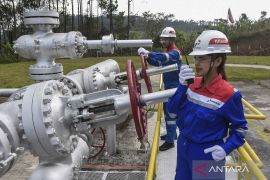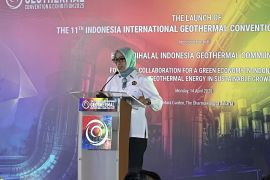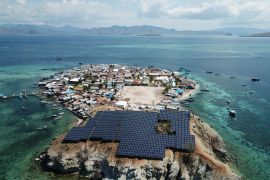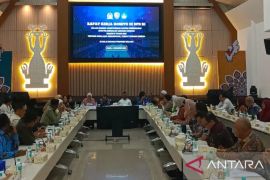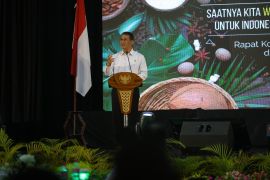"The state appoints PLN to carry out this task in order to bring electricity to the people," he noted in a statement on Monday.
The minister conveyed the instruction during a working visit to Ambon on April 5 after reviewing the Load Distribution and Regulation Implementation Unit (UP3B) in Ambon, Maluku Province.
Lahadalia explained that Maluku has a geothermal potential of 40 MW that should be developed immediately.
He emphasized that the PLTP project has been included in the draft of the Electricity Supply Business Plan (RUPTL) of PT PLN for 2025–2034 as a strategic step towards transitioning to clean energy through the use of new and renewable energy (NRE).
"This aims to cut dependence on diesel and coal. Old power plant machinery can be replaced with NRE as a form of the government's concern to provide NRE in line with international consensus," he remarked.
The PLTP projects in Maluku Province include the 20 MW Wapsalit PLTP on Buru Island and the 2x10 MW Tulehu PLTP on Ambon Island.
He noted that the 20 MW Wapsalit PLTP is currently in the exploration stage by private developers and is targeted to start commercial operations (COD) in 2028.
Meanwhile, the 2x10 MW Tulehu PLTP is currently in the procurement stage by PLN and is targeted to COD in 2031.
Additionally, there is geothermal potential in Banda Baru on Seram Island, which could be developed into a 25 MW PLTP based on survey results by the Geological Agency and will be offered in the market sounding this month.
Currently, the electricity system in Maluku Province still relies heavily on fossil fuel-based power plants. Based on 2024 data, the total power generation capacity in this region reached 409 MW, Lahadalia outlined.
Of that capacity, around 99 percent, or 406 MW, still comes from fossil sources, namely Diesel Power Plants (PLTD), as well as a combination of gas and steam-fueled power plants (PLTG, PLTGU, and PLTMG).
He noted that PLTD is the largest contributor, with a capacity of 249 MW, or around 61 percent of the total capacity, followed by gas and steam-based power plants, which produce 157 MW, or 38 percent.
Meanwhile, he explained that the contribution of NRE is still limited, totaling only about three MW, or less than one percent, which includes 3 MW from Solar Power Plants and 0.1 MW from Hydroelectric Power Plants, including Microhydro systems.
Related news: Bengkulu ready to supply Sumatra's 110-MW geothermal power
Related news: PLN opens collaboration for development of nine geothermal work areas
Translator: Putu Indah S, Resinta Sulistiyandari
Editor: Rahmad Nasution
Copyright © ANTARA 2025

